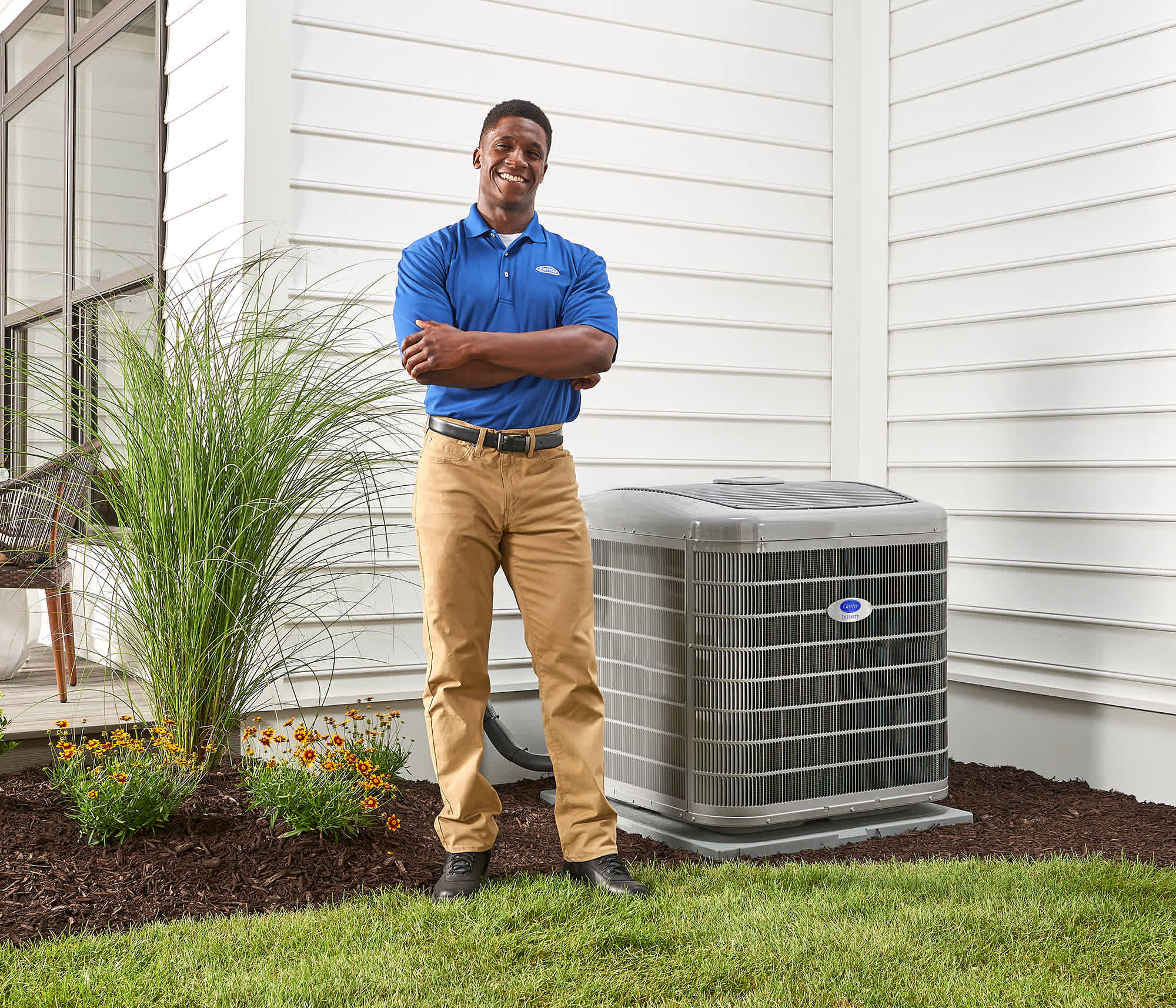Heat Pump Service & Maintenance Tips
When it comes to maintaining a comfortable home environment, the efficiency and reliability of your heat pump is paramount. Scheduling regular heat pump service is vital to ensure your heat pump operates at peak performance. Neglecting routine maintenance can lead to decreased efficiency, costly heat pump repairs, and even premature system failure. For homeowners seeking to protect their investment, understanding the importance of heat pump service and finding reliable heat pump service is essential for long-lasting comfort and savings. Learn more in this guide on heat pump service.
What is Checked During Heat Pump Service
During a routine maintenance service call, your dealer will likely evaluate your home’s heat pump system performance while the thermostat is set in various modes of operation. This will help to determine its condition and whether repairs or adjustments are needed. Then they will shut off electrical power to execute a number of cleaning and inspection tasks. Maintenance services will vary from contractor to contractor, but most HVAC dealers will perform similar tasks as part of a standard “clean and check” appointment, including to:
- Check refrigerant charge levels and air flow, check for refrigerant leaks
- Make sure all electrical connections are sound and components are working properly
- Check for secure physical connections of individual parts
- Check the run capacitor for bulging and/or unusual markings or color
- Check and clean the outdoor unit & coil
- Check & inspect the reversing valve
- Test the defrost cycle
- Check the auxiliary heat system and test for heating in defrost mode
- Check indoor coil for blockage and apply self-rinsing cleaner when possible
- Check and clean the condensate drainage system
- Clean and adjust blower components in the air handler unit
- Check the air filter, and replace or clean, if needed
When the service is complete, many contractors will provide a written summary of the inspections and tests completed along with results and recommendations. In some cases, needed repairs may be completed on the spot.
Curtis Herchenbach, owner of Herchenbach Mechanical in Gurnee, IL, lists some of the key things his company checks during a routine maintenance service call for a heat pump.
“We’re likely to check for temperature drop and temperature rise, clean the coils, and clean or replace the air filter,” Herchenbach said.
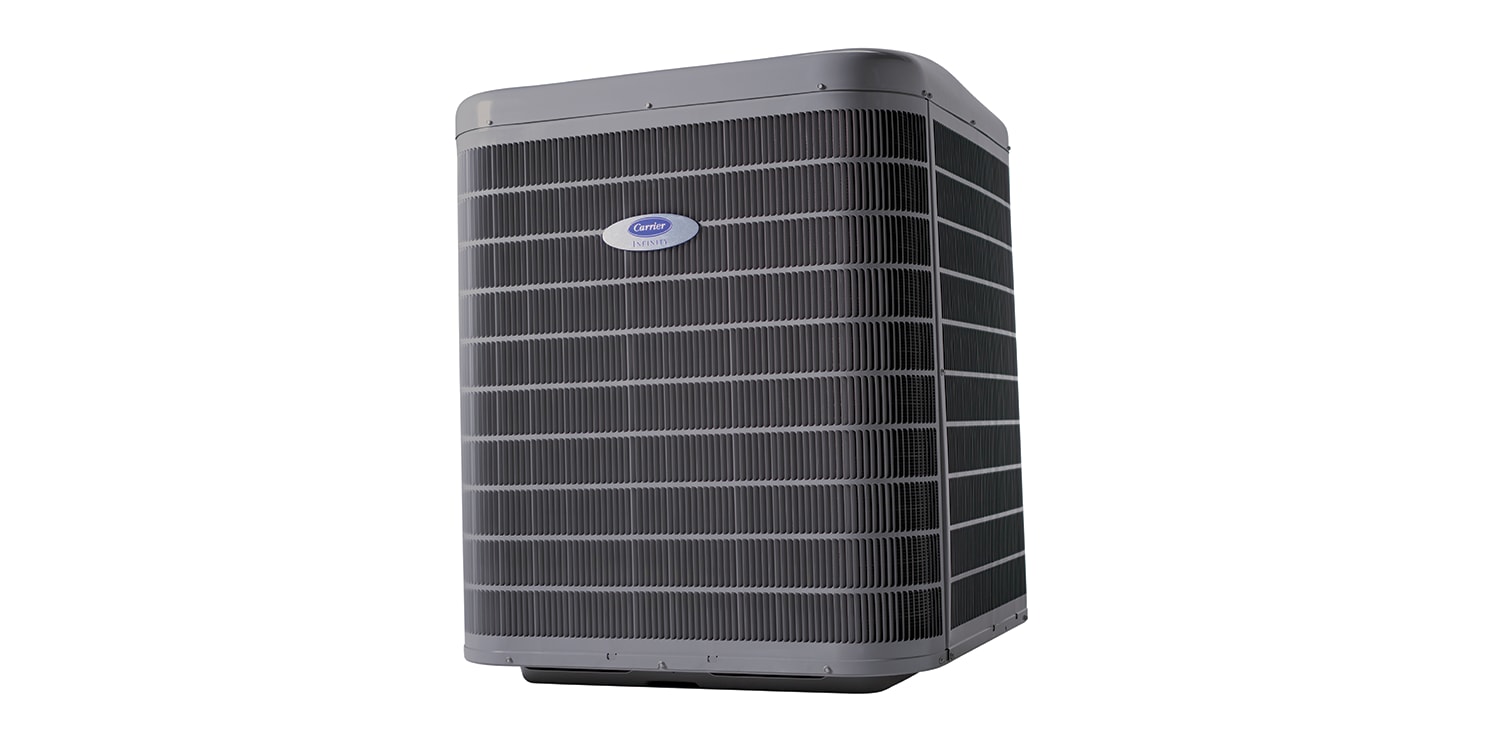
DIY Heat Pump Maintenance Checklist for Homeowners
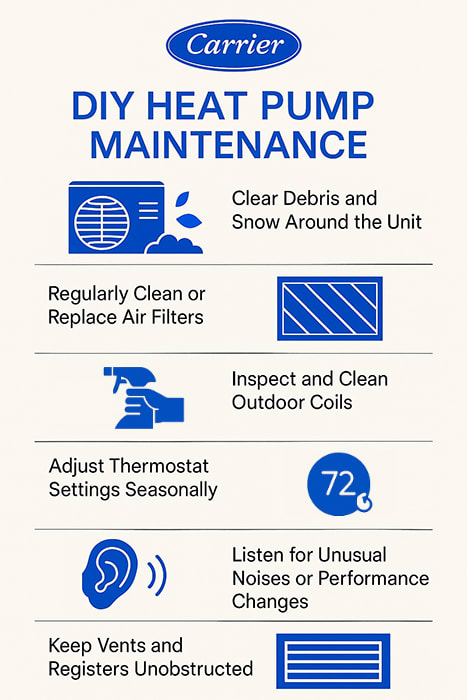
- Clear Debris and Snow Around the Unit. Make sure the area around your outdoor unit is free of leaves, dirt, snow, and other debris. This allows for proper airflow and helps prevent strain on the system, especially around the outdoor coils.
- Regularly Clean or Replace Air Filters. Check your air filter monthly and clean or replace it as needed—especially during peak heating and cooling seasons. A clogged air filter restricts airflow and forces your heat pump to work harder than necessary.
- Inspect and Clean Outdoor Coils. Visually inspect your outdoor coils for dust, dirt, or buildup. Gently rinsing them with a hose (when the unit is off) can help maintain efficient heat exchange and avoid system overworking.
- Adjust Thermostat Settings Seasonally. In the winter, set your thermostat to a comfortable, consistent temperature during the day and slightly lower at night. In the summer, do the opposite—slightly warmer at night. Avoid frequent drastic changes, as this can cause unnecessary cycling and reduce efficiency.
- Listen for Unusual Noises or Performance Changes. Pay attention to any rattling, grinding, or hissing sounds, or if the system isn’t heating or cooling as expected. Early detection of issues can prevent more serious repairs down the line.
- Keep Vents and Registers Unobstructed Ensure furniture, rugs, or curtains are not blocking air vents. Clear airflow helps the system distribute air evenly and operate more efficiently.
3 Benefits of Preventative Heat Pump Service
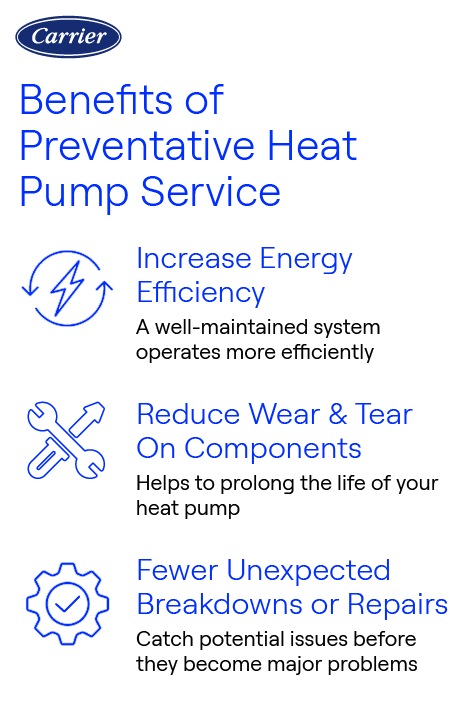
Consider regular air conditioner or heat pump maintenance to be part of a complete home improvement plan. Proper heat pump maintenance can benefit you in a number of ways:

1. Increase Energy Efficiency
Without getting too technical, your heat pump relies on a large coil in the outdoor unit and second coil inside your home to provide heat transfer for both heating and cooling your home.
The outdoor coil is exposed to the elements year-in and year-out, accumulating dirt, debris and other pollutants, especially when it is wet from either weather or the heating and cooling process.
The indoor coil is located in or on your indoor air handler unit (either a furnace or fan coil). It can attract airborne pollutants such as dust, mold spores or pet dander because of condensation associated with air conditioning and heating your home.
Both coils operate most efficiently when they are clean and free from buildup of dirt and debris. Without regular cleaning and maintenance, dirty coils can cause your system to work harder to keep up with heating and cooling demand, decreasing efficiency and increasing stress on fans, motors and other system components.
Keeping the system’s air filter clean and replacing it regularly can also aid efficient performance. Dirty, clogged air filters can restrict airflow, resulting in reduced comfort, higher utility bills and, in more extreme cases, a total shutdown of the system. Learn more about how to replace air filters and how often to change air filters.
2. Reduce Wear & Tear
3. Fewer Unexpected Breakdowns, Saving Time & Money in the Long Run
Common Issues Found During a Professional Heat Pump Service
A malfunctioning heat pump can result from a myriad of issues. Three commonly reported issues include:
- Heat pump frozen – In winter, a frozen heat pump might be the result of the defrost cycle not working, the outdoor fan not working, low refrigerant charge, the outdoor unit being physically blocked, or water dripping onto the unit and freezing. A frozen heat pump won’t heat, and worse, can lead to severe damage or failure if allowed to operate. During summer, a freeze up can happen on the indoor coil, or copper line leading to the compressor as a result of a low refrigerant issue, a clogged air filter or extremely dirty coils.
- Running constantly – In winter, check the thermostat to be sure the heat pump isn’t set for cooling. Other reasons may be a frozen outdoor coil, a compressor problem or a dirty and poorly maintained unit. In summer, check to be sure the system is not in heating mode. Other issues may be triple-digit temperatures, refrigerant leakage, or a dirty/clogged coil or air filter.
- Blowing cold on heat mode – Check to see the thermostat wasn’t changed to AC/cool mode. If not, the problem might be low refrigerant charge, or a reversing valve or compressor issue. It could also be the result of poor maintenance and a dirty/clogged coil.
- Heat pump not heating or cooling - For insight on why your heat pump is not providing the comfort you expect, and what to do about it.
If you are experiencing any of the above, we recommend contacting a professional Carrier HVAC technician for heat pump service. For more information and/or help with troubleshooting, take a look at our additional resources about heat pump troubleshooting.
Find Heat Pump Maintenance Near Me
If you don’t already have a heat pump service professional performing regularly scheduled maintenance on your system, finding one is easy! Our Carrier HVAC dealer locator can help get you matched with a qualified technician in your area for heat pump maintenance or heat pump service. Keeping your system running is important for your comfort and your system’s efficiency and longevity, so don’t delay.
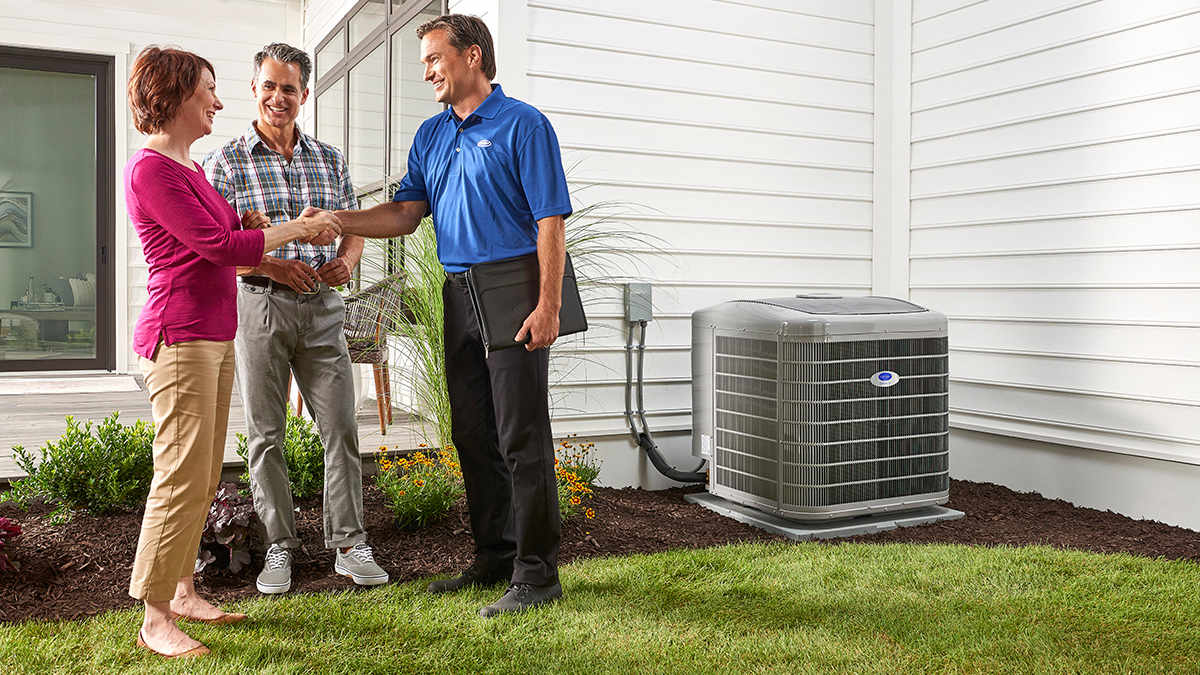
Frequently Asked Questions About Heat Pump Service
Learn More About Heat Pump Service
- Explore HVAC maintenance deeper
- Find out more about what is a heat pump
- Get information about the cost of a heat pump
- Heat Pumps: A Sustainable Comfort Solution
- Discover heat pump tax credits
- Explore heat pump installation


